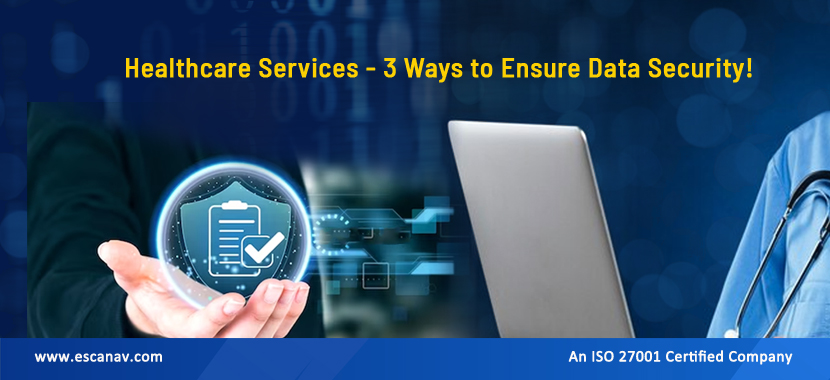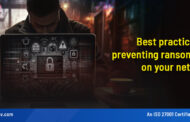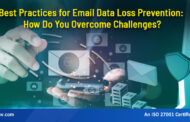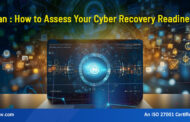Considering its high value and sensitivity, healthcare data is a target of cyberattacks, resulting in the healthcare industry being highly regulated through legislation such as the Health Insurance Portability and Accountability Act (HIPAA). This has resulted in healthcare having the highest average total data breach costs of any industry for the 13th consecutive year.
Healthcare data breach costs have increased 53.3% over the last three years, according to IBM and Ponemon Institute’s Cost of a Data Breach Report 2023, at an average cost of $10.93 million.
Healthcare services collect a wealth of Protected Health Information (PHI) that is subject to HIPAA. Specifically, PHI refers to information about an individual’s past, present, and future health and the provision of healthcare. PII also includes names, addresses, or Social Security numbers that can reveal a person’s identity, medical history, or other personal information by themselves or when combined with other identifiers. PII is also protected under more generanl data protection legislation, such as the EU’s General Data Protection Regulation (GDPR).
It is important for healthcare organizations to build a comprehensive data security strategy in order to ensure compliance with regulations and avoid fines and other costs associated with data breaches. The confidentiality and integrity of patient health information are directly impacted by effective data security. Take a closer look at how they can accomplish this.
1. Deal with internal threats
As important as external threats are for maintaining patient privacy, internal threats also need to be addressed. This includes maintaining vigilance when handling patient records so as to prevent breaches. Healthcare data breaches caused by internal threats account for approximately 35% of all breaches. The problem arises because, by law, most health data cannot be transmitted outside an organization without being encrypted or transferred through secure, authorized channels. Identifying weak points in patient data handling can be made easier by conducting regular risk assessments. The flow of sensitive health data into and out of healthcare networks can be controlled by Data Loss Prevention (DLP) solutions.
Data loss prevention tools are designed to protect sensitive data directly by tracking and controlling sensitive data falling under laws such as HIPAA and GDPR across company networks. By identifying health data in files and emails before they are sent, DLP solutions can block their transfer through unauthorized channels with powerful content inspection and contextual scanning tools.
As the healthcare industry embraces remote working, robust data security measures, specifically HIPAA compliance, are critical. Secure data can be achieved by upgrading to a comprehensive endpoint DLP, such as Endpoint Protection by eScan. A meticulous tracking and logging process is required for activities related to electronic Protected Health Information (ePHI). Data access, modification, and communication with patients fall under this category. HIPAA violations such as unauthorized access can be detected and investigated using audit trails. By utilizing them, healthcare providers and organizations can identify suspicious activities and mitigate potential insider risks.
Ensure that all employees in healthcare are equipped with the necessary tools and knowledge to monitor sensitive patient information effectively. Utilizing specialized software that provides real-time alerts and reports on data access and utilization might be necessary. Additionally, these systems should be capable of detecting potential phishing attempts or other cybersecurity threats that could compromise data.
2. Restrict access to data
When health data is stored locally on work computers, it can be vulnerable to theft. An electronic health record (EHR) is essential to healthcare information systems. During their work, employees often access, save, and download confidential information and often forget to delete these files when they are no longer needed. Due to the ease with which malware such as Trojans and ransomware can access local files, this significantly increases the risk of losing data when victims suffer from phishing cyberattacks. This poses a significant risk to data security and compliance efforts as laws such as HIPAA stress the need to limit data access on a need-to-know basis. Restricting access to data is pivotal to preventing unauthorized access to sensitive medical information.
DLP solutions can scan the whole enterprise network for sensitive data, and when it is detected in unauthorized places, admins can delete it or encrypt it. Healthcare organizations can ensure that employees no longer have access to sensitive information they do not need to perform their duties. Keeping sensitive data locked away can reduce the digital trail of health records and ensure they are only stored where they are needed.
A healthcare organization that implements eScan Endpoint Protection’s feature can scan macOS, Windows, and Linux endpoints and take remediation actions such as encrypting or deleting files in a matter of minutes. The administrator can perform a clean scan to cover all repositories or an incremental scan to continue scanning from where the last scan ended. Scans can be performed using flexible policies based on whitelists and blacklists.
3. Control removable devices
However, many employees still use removable devices such as USBs or external hard drives to transfer large amounts of data or big files, despite the internet becoming the data transfer method of choice. Healthcare information must be protected by addressing vulnerabilities associated with these devices. The size of these devices makes them easy to lose or steal due to the fact that they are so small. Worse yet, in recent years, USB drives, in particular, have become a popular tool for those who wish to attack computers with malware. A crucial step in securing these devices against cybercriminals who may target them in the future is to take this precaution.
Using DLP solutions, healthcare services can monitor and control peripherals, USB ports, and Bluetooth connections to address these risks. Users can block their use entirely or limit it to approved devices. So, healthcare services can detect suspicious network activity and possible data theft on the network by tracking which employees are using which devices at what times. In addition, some solutions, such as Endpoint Protection, offer granular policies, which allow companies to set different restrictions based on groups, departments, devices, and individuals.
eScan Endpoint Protection’s Encryption feature can also help healthcare organizations ensure data security. Using this method, any data copied onto a USB drive is automatically encrypted and only those with the decryption key can access it. Administrators can remotely wipe USB drives if they are lost or stolen and push updates and messages to users.







